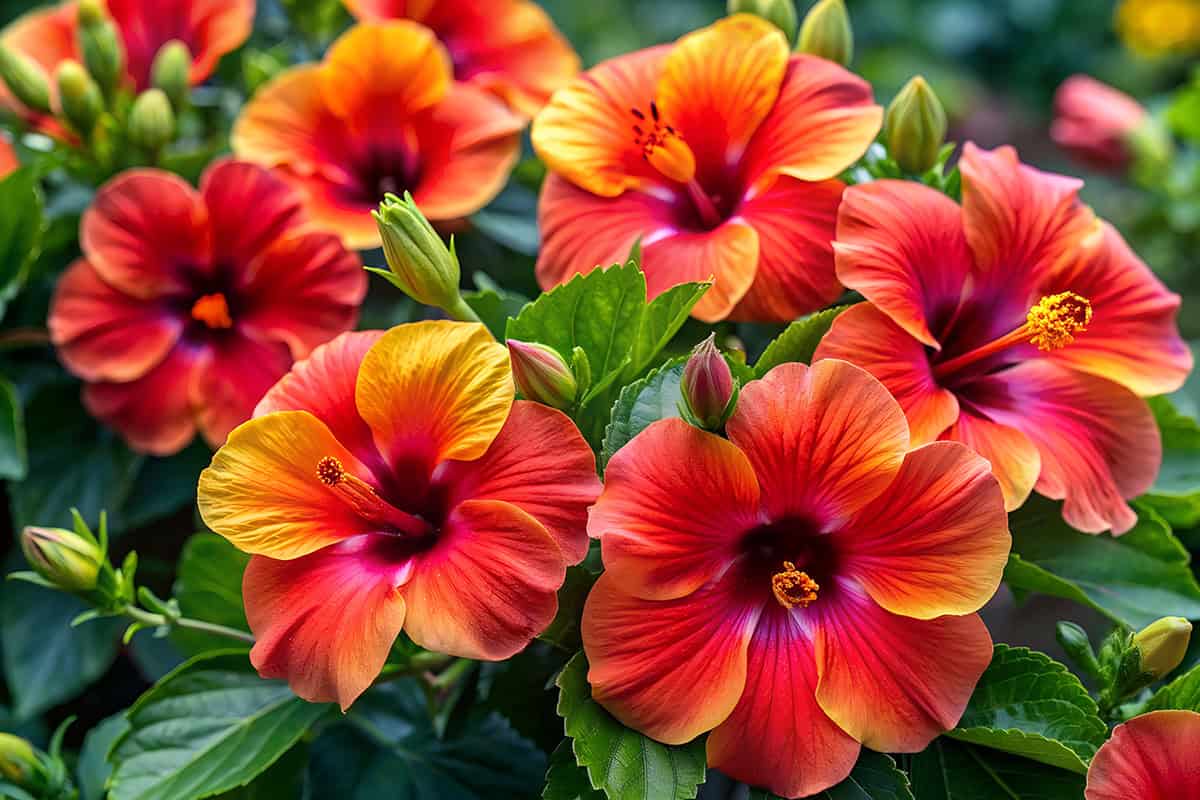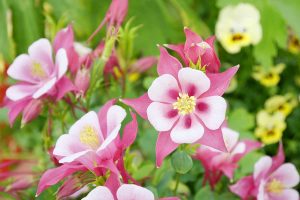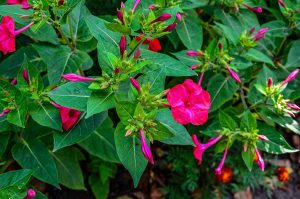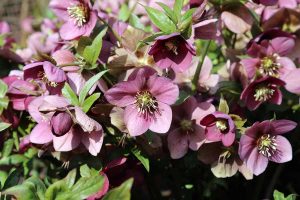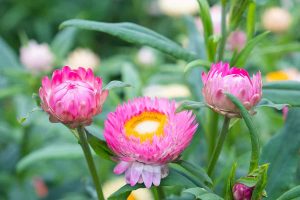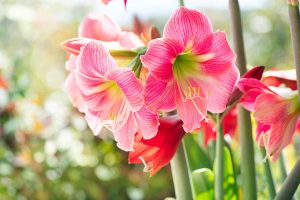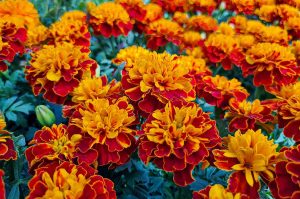Year-round gardening is one of the best perks of living in Florida. But not all flowers can handle the weather. This article will show you the ones that can, so your garden stays colorful every day of the year.
Table of Contents
- Flowers That Grow in Florida Year-Round
- Hibiscus
- Bougainvillea
- Pentas
- Lantana
- Vinca (Periwinkle)
- Ixora
- Plumbago
- Firebush (Hamelia patens)
- Mexican Heather
- Mandevilla
- Jatropha
- Allamanda
- Crossandra
- Thryallis
- Purslane
- Ruellia (Mexican Petunia)
- Bird of Paradise
- Canna Lily
- Blue Daze (Evolvulus)
- Blanket Flower (Gaillardia)
- Coleus
- Porterweed
- Shrimp Plant
- Crown of Thorns (Euphorbia milii)
- Desert Rose (Adenium)
Flowers That Grow in Florida Year-Round
With mild winters and steamy summers, Florida supports a surprising range of flowers that just won’t quit. Some stand out for their stamina, bold colors, and sheer willingness to keep going through heat, rain, and everything else the subtropics throw at them.
Hibiscus
Huge, open blooms are the signature of hibiscus in Florida. You’ll find everything from fiery reds and bright yellows to gentle pinks and white. Each flower only sticks around for a day, but new ones pop out daily when it’s warm enough.
They bring a real tropical vibe. Full sun and regular watering keep them happy. A little pruning goes a long way for shape and size.
Bougainvillea
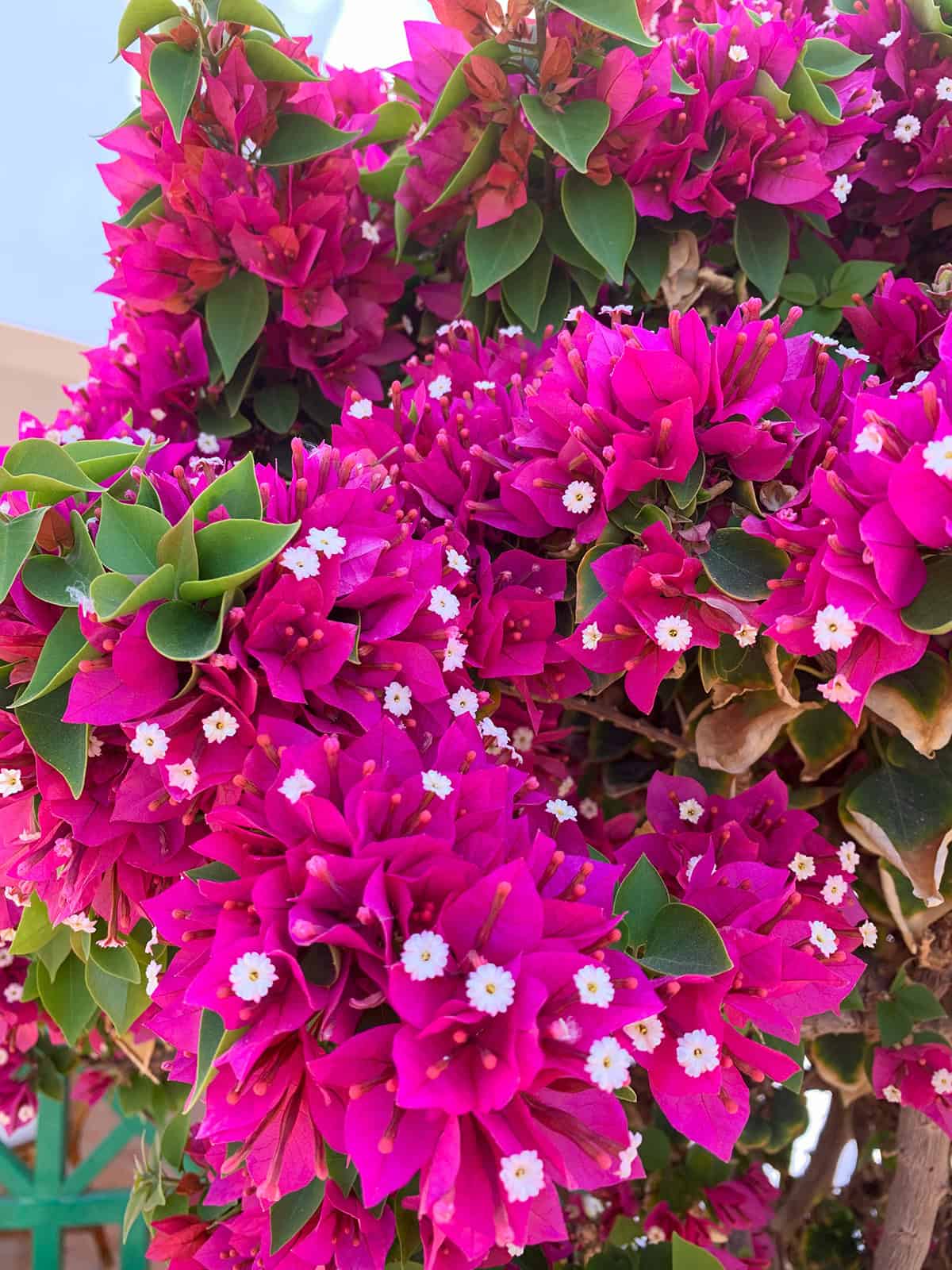
Bougainvillea is all about drama, with its papery, neon bracts. These stunners love the Florida sun, and once they’re settled in, they’re tough as nails.
They’ll sprawl, climb, or drape themselves, depending on how you train them. Good drainage is a must, and you don’t need to fuss much with fertilizer. Blooms keep coming, but you’ll see the biggest show from fall through spring.
Pentas
If butterflies are your thing, pentas are a must. Their little star-shaped flowers cluster at the stem tips and keep blooming all year. Colors run the gamut—red, pink, purple, white.
Stick them in beds or containers. More sun means more flowers, but they’ll manage in some shade too. Water deeply and let the top layer dry out before the next round.
Lantana
Lantana shrugs off Florida’s heat and keeps throwing out clusters of yellow, orange, red, pink, or white—sometimes all on one plant. The leaves have a strong scent if you brush past.
It’s a tough ground cover, and butterflies flock to it. Sun and dry conditions suit it best. Skip the extra watering to avoid root rot.
Vinca (Periwinkle)
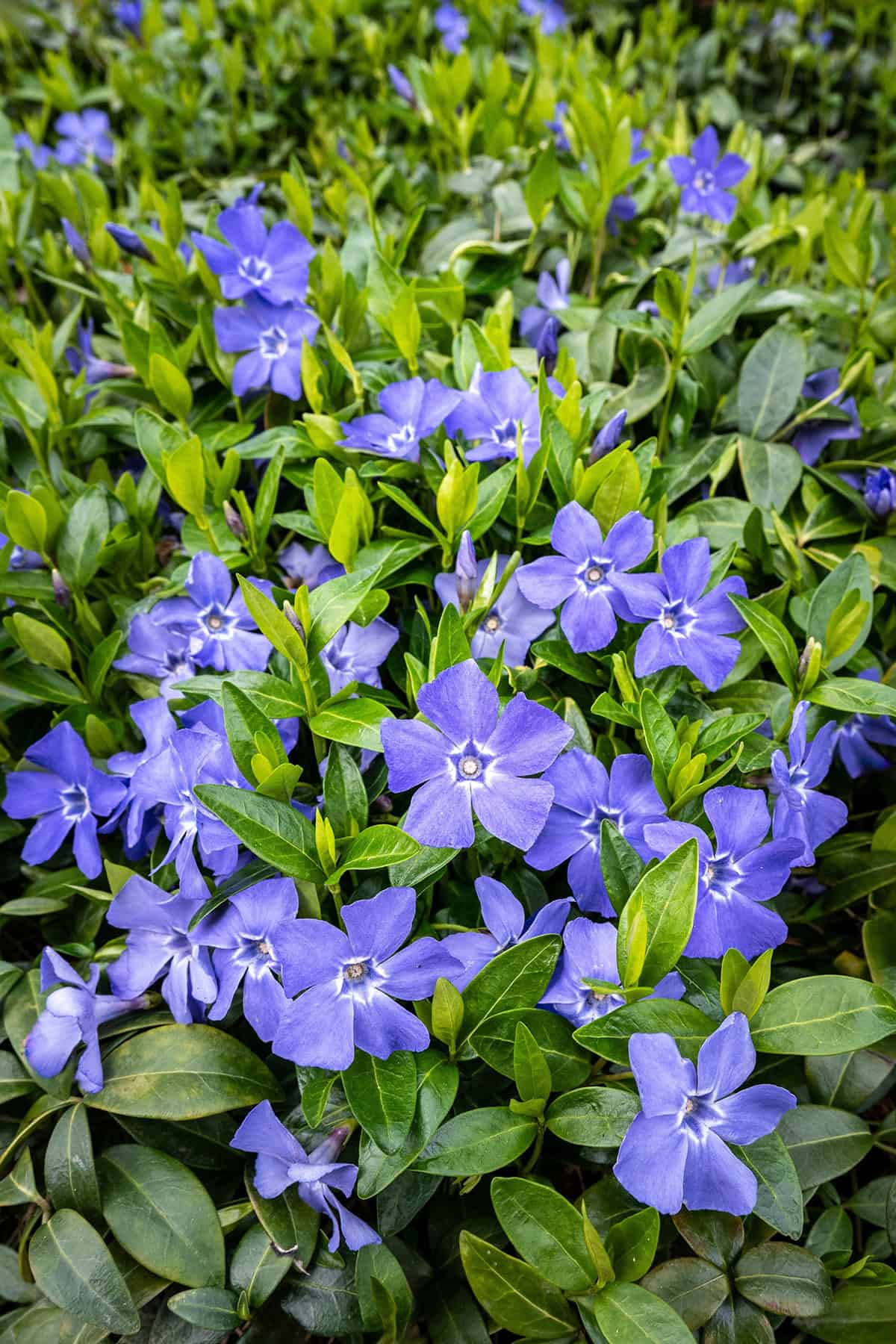
Vinca stands out with shiny leaves and a steady supply of five-petaled blooms—white, pink, or purple. It’s not fussy about drought or humidity and rarely gets sick.
Drop it into beds, borders, or pots. Well-drained soil is all it really asks for. Go easy on the fertilizer for more flowers.
Ixora
Ixora brings dense clusters of tiny orange, yellow, or red flowers, like little globes. The dark, evergreen leaves give structure all year.
They want at least six hours of sun and prefer acidic soil. Regular watering helps, especially when it’s dry. Prune after blooms fade to keep things tidy.
Plumbago
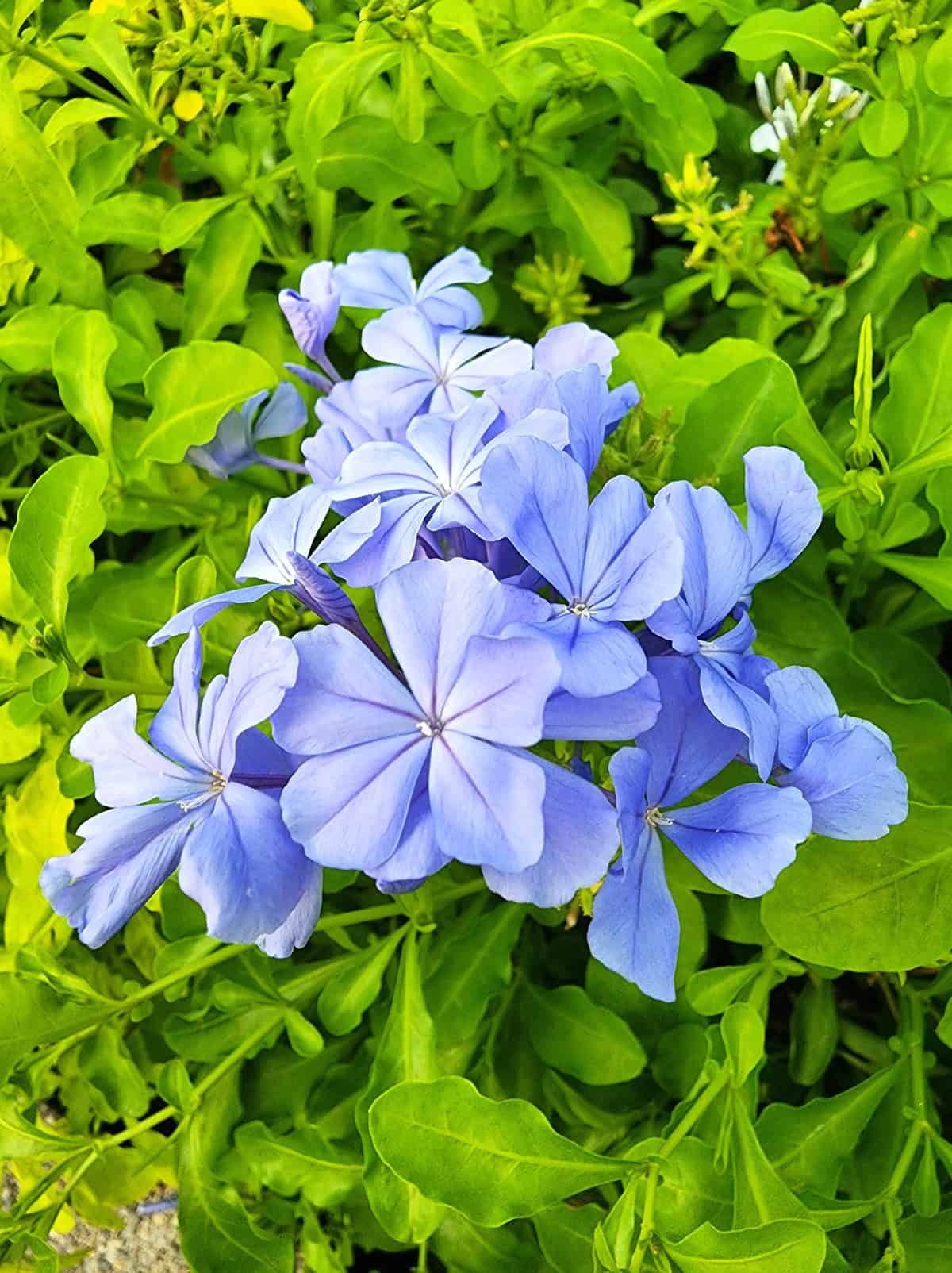
Plumbago’s soft blue or white flower clusters are hard to miss. It’s great as a loose hedge or sprawling ground cover, and butterflies love it.
Sun is key. It can take some drought and bounces back if you cut it back hard. Works well trailing over a fence or wall.
Firebush (Hamelia patens)
Firebush is a Florida native with tubular reddish-orange flowers that hummingbirds and butterflies can’t resist. The leaves even get red tips when it’s cooler.
Sun or part shade is fine. It handles drought but appreciates water now and then. As long as it’s warm, you’ll get flowers all year.
Mexican Heather
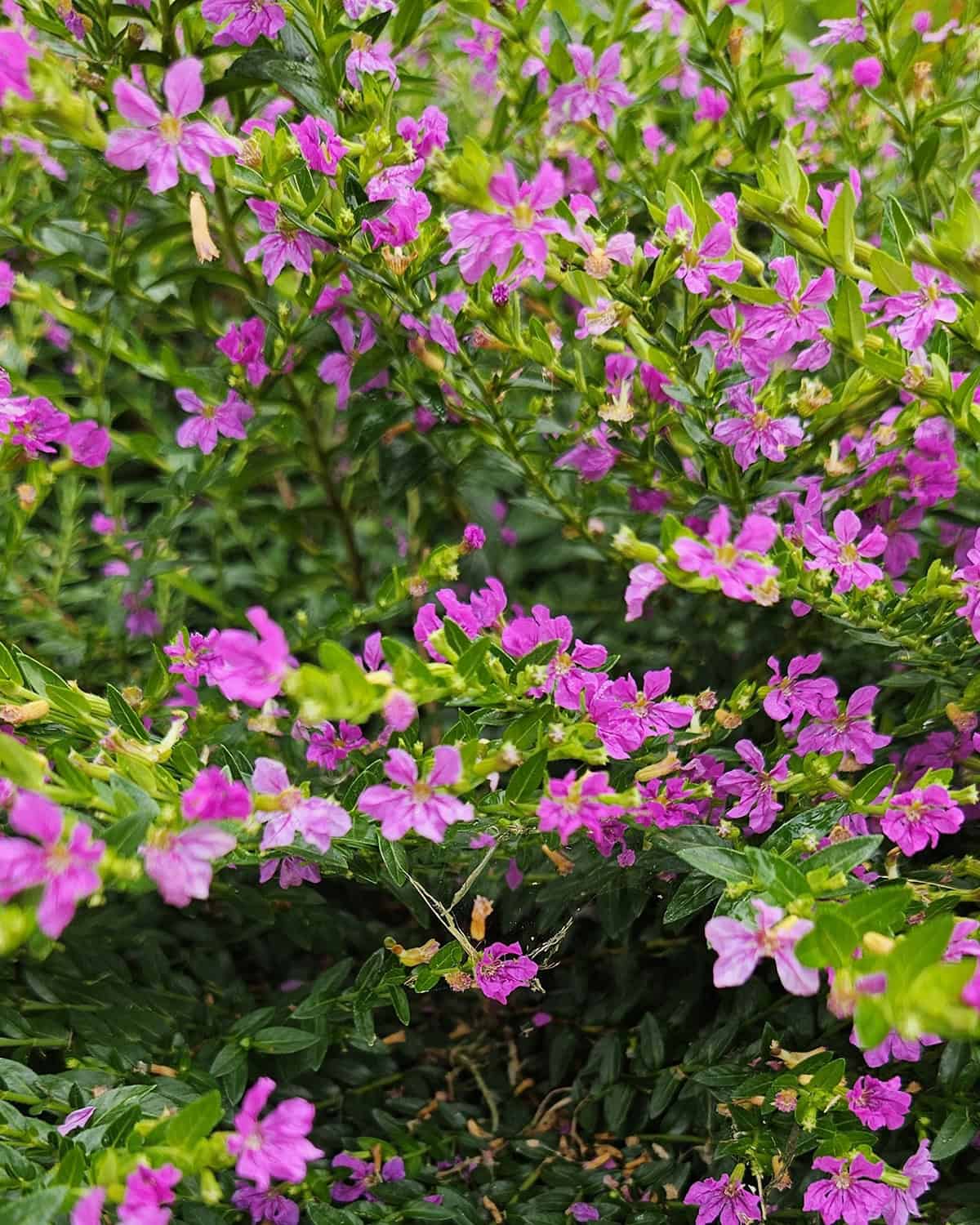
Mexican heather covers itself in tiny lavender, pink, or white blooms. The fine, needle-like leaves give it a feathery look, and bees and butterflies are frequent visitors.
Partial sun works, and it actually tolerates more shade than most. Just make sure the soil drains well. It’s a good pick for borders or pots when you want steady color.
Mandevilla
Mandevilla is all about those big, trumpet-shaped blooms—deep pink, white, or red—twining up anything you give it. The leaves are glossy and lush.
Let it climb a trellis or fence. Morning sun and some afternoon shade seem to work best. Regular watering and a little fertilizer now and then will keep it flowering.
Jatropha
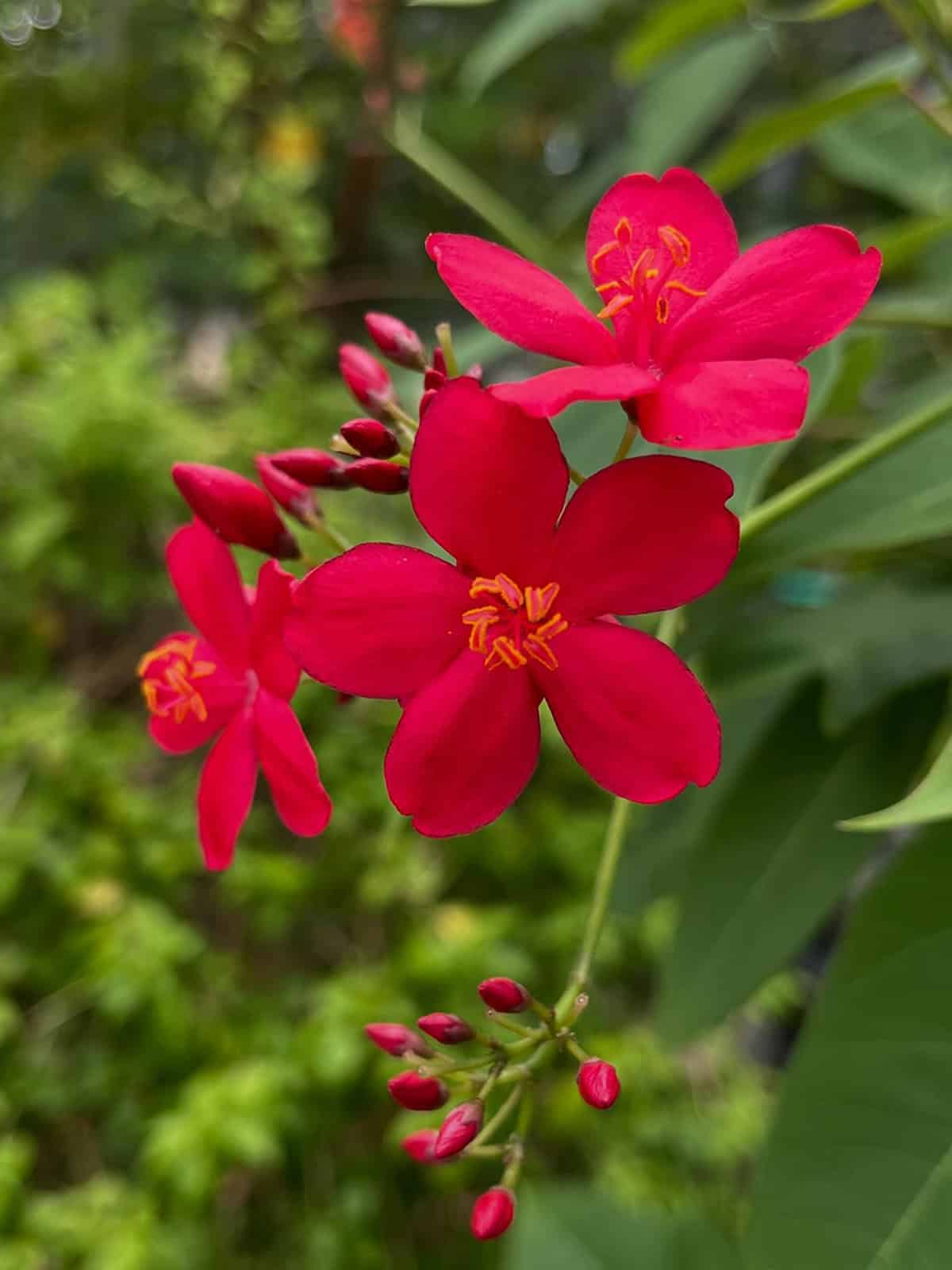
Jatropha sports clusters of bright red or pink flowers at the tips of upright stems. Butterflies seem to love it. While it blooms year-round, it really kicks into gear when it’s hot.
Full sun or some afternoon shade works, especially inland. It doesn’t need much pruning and handles dry spells without complaint.
Allamanda
Allamanda flashes big, golden-yellow flowers almost nonstop if you keep it warm and sunny. The leaves are thick and glossy, so it always looks fresh.
Keep the water coming and make sure it drains well. You can train it up or clip it as a shrub. Heads up: it’s toxic if eaten, so maybe skip it near pets or kids.
Crossandra
Firecracker flower—crossandra—is upright and lush, with shiny leaves and fan-shaped orange or salmon blooms that don’t mind Florida’s muggiest weather.
It likes heat and can handle some dryness, but regular water makes it thrive. A bit of afternoon shade keeps the leaves from burning. Blooms last several days, so there’s always something happening.
Thryallis
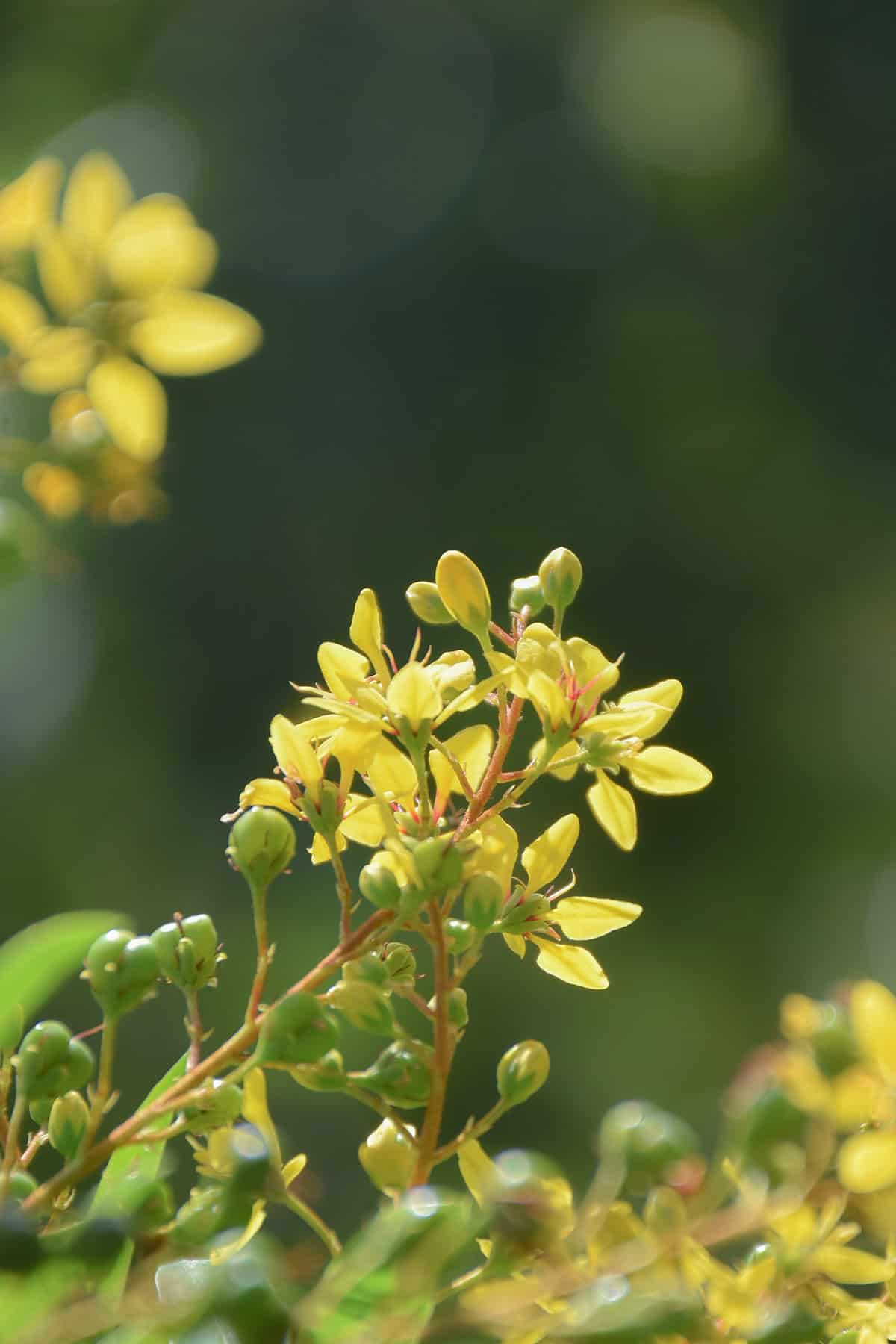
Thryallis shows off clusters of small, star-shaped yellow flowers on arching stems. These shrubs stay neat without much effort.
Sun or partial shade, sandy soils—no problem. They’re drought-resistant, so you don’t have to hover over them.
Purslane
Purslane is a tough little ground cover with cup-shaped blooms in pink, yellow, orange, or red. The succulent leaves hold water, so it laughs at the summer sun.
Flowers open up in the morning and close by afternoon. It’s perfect for dry spots or poor soils where other flowers give up.
Ruellia (Mexican Petunia)
Ruellia pumps out trumpet-like purple, pink, or white flowers, usually after a rain. Upright stems form thick clumps, and it spreads fast.
It’s about as low-maintenance as it gets. Handles heat, wet, dry—pretty much anything. It does self-seed a bit aggressively, so keep an eye on it.
Bird of Paradise
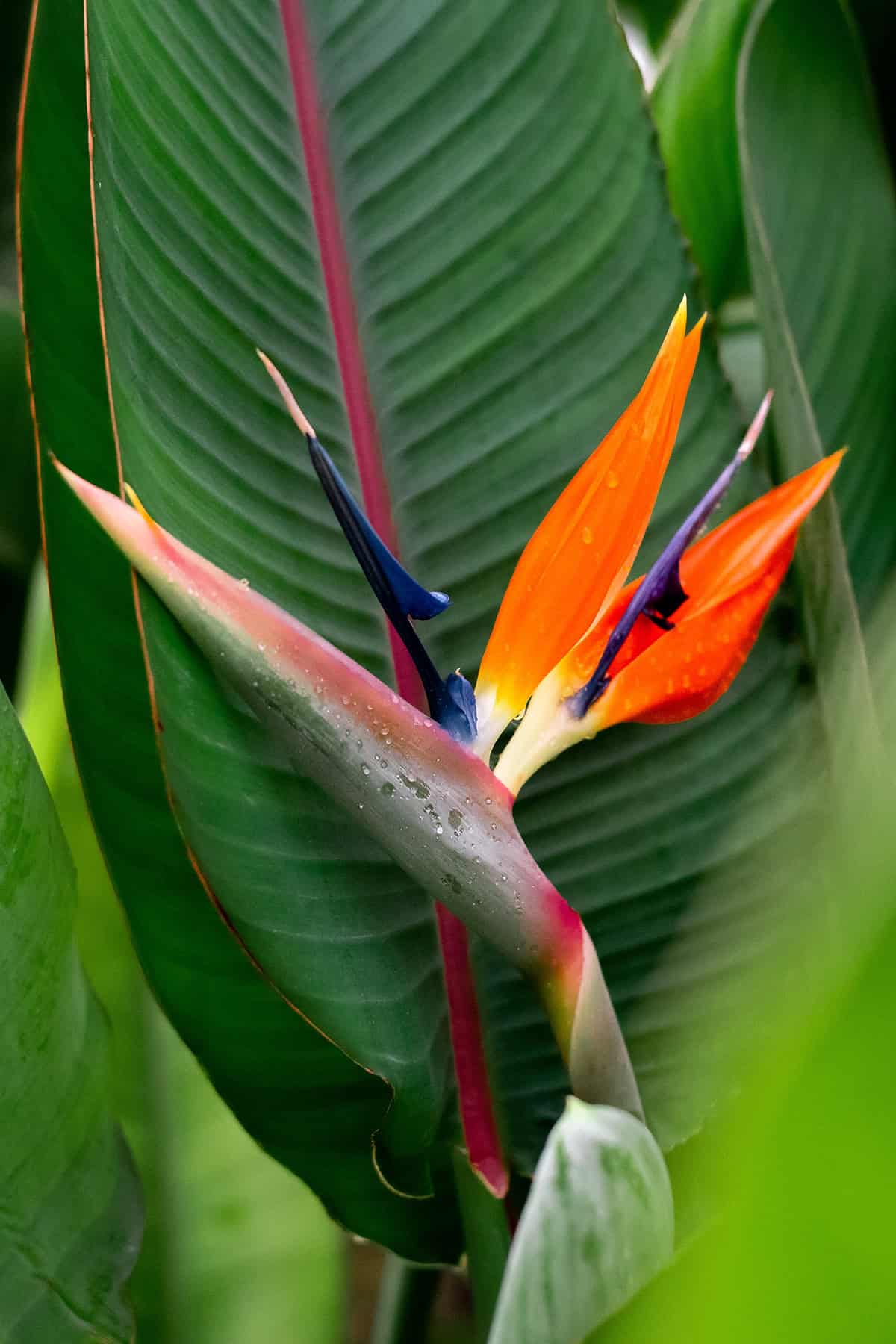
Those wild orange and blue flowers look like a bird mid-flight. The big, paddle-shaped leaves add a dramatic touch.
Full sun and well-drained soil are best. It needs a few years to settle in before it really shows off, but once it does, you’re set for nearly year-round blooms—assuming it stays warm and gets a little fertilizer.
Canna Lily
Canna lilies offer bold leaves and spikes of red, orange, yellow, or pink flowers. Sometimes the foliage has stripes or a bronze tint.
They love sun and don’t mind wet feet, so they’re great near ponds. Trim off spent blooms for a tidier look. They multiply easily if you want more.
Blue Daze (Evolvulus)
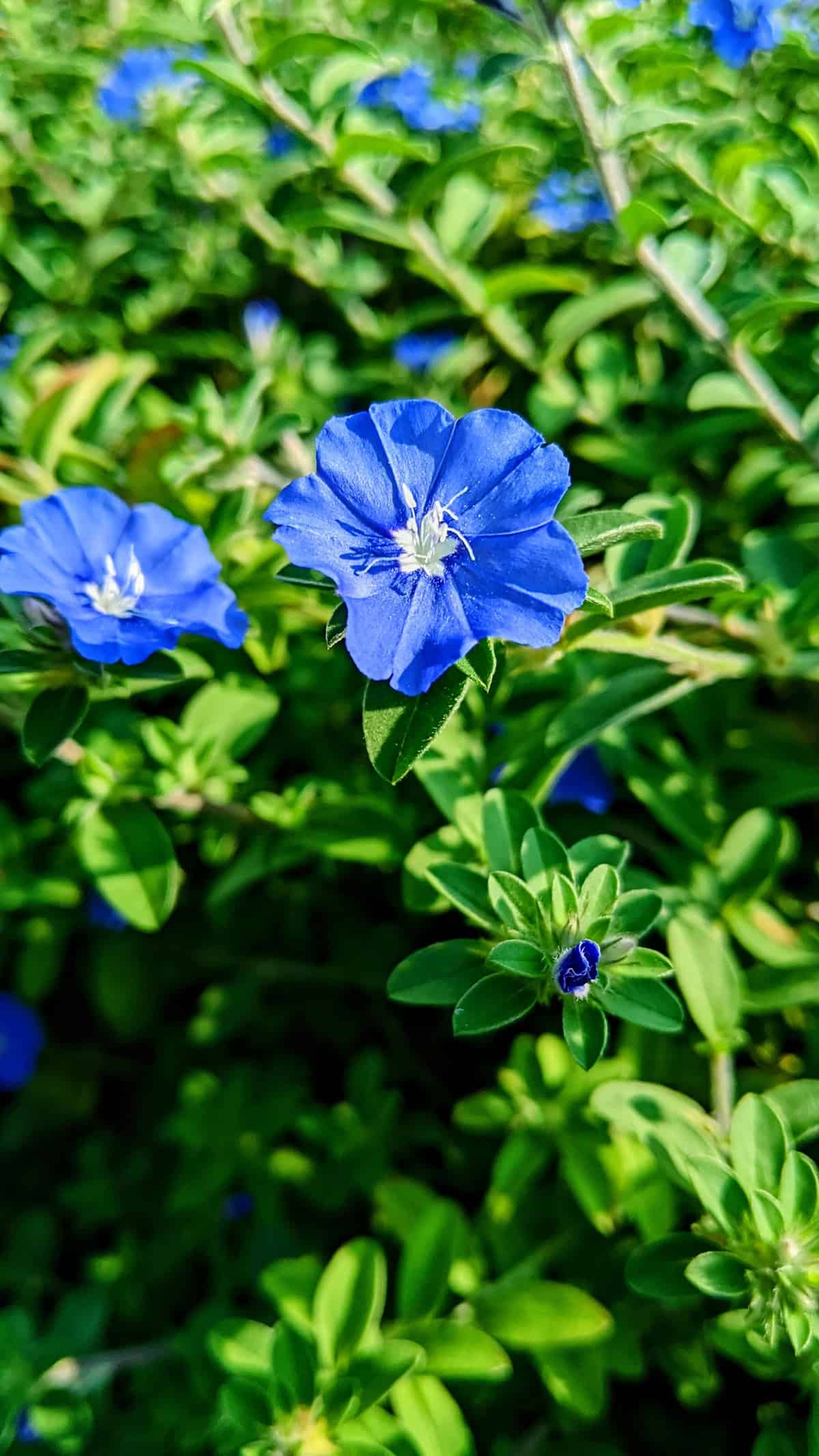
Blue daze gives you a carpet of sky-blue flowers, especially in the morning. The fuzzy, gray-green leaves sprawl low to the ground.
This one wants sun, tolerates heat and salty air, and once it’s going, doesn’t need much water. It’s a winner as a ground cover or trailing over edges.
Blanket Flower (Gaillardia)
Blanket flower throws out cheerful, daisy-like blooms with red centers and yellow tips. Heat and drought barely slow it down.
Sandy, well-drained soil is best. Not only do pollinators love it, but it also reseeds itself. Deadhead for even more color.
Coleus
Coleus is all about the leaves—lime green, burgundy, wild patterns. Flowers do show up, but most people pinch them off to keep the foliage looking its best.
Shade or partial sun is fine. Pinch back often for a fuller plant. It’s a fun way to add color where flowers struggle.
Porterweed
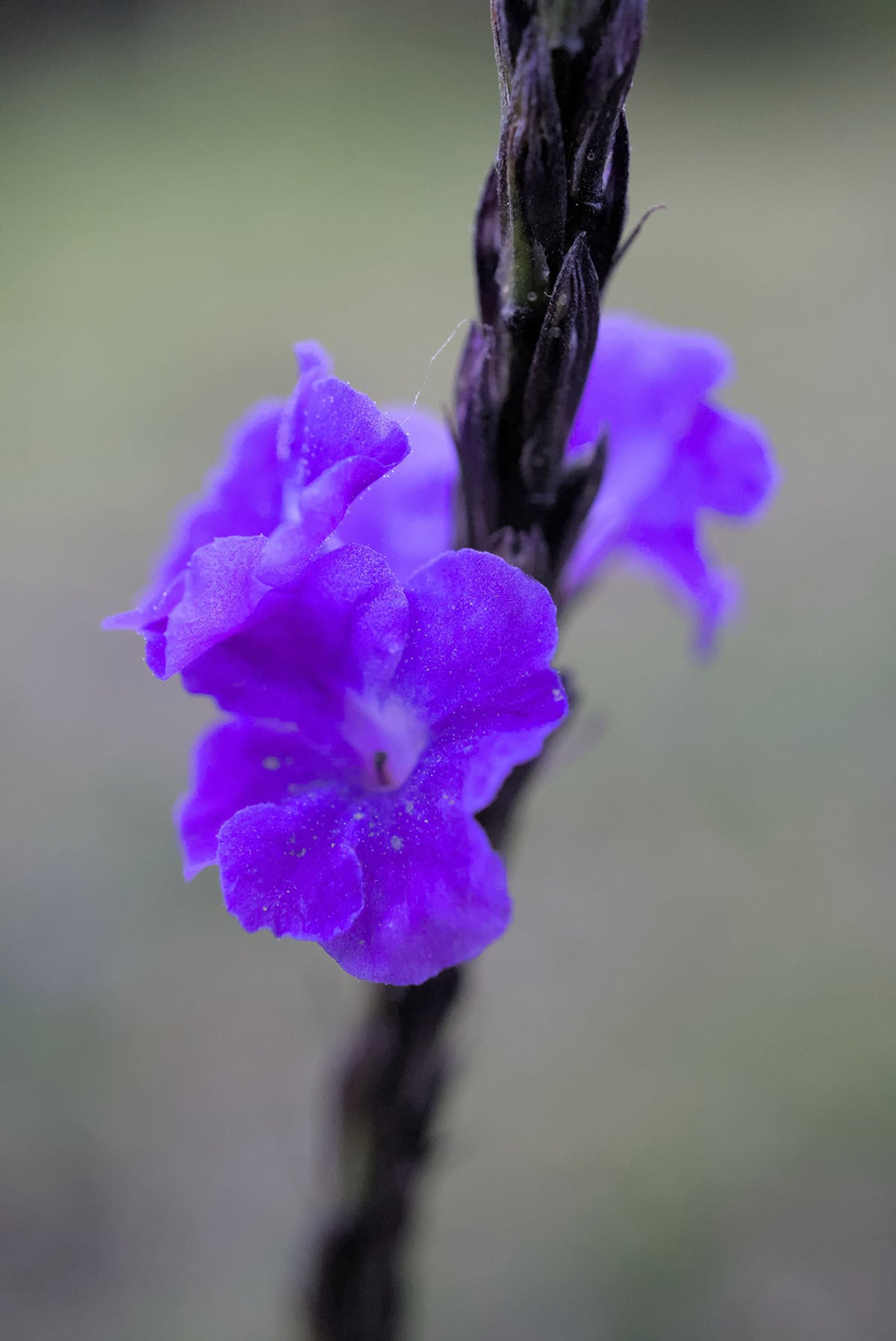
Porterweed sends up thin spikes of blue or purple flowers that butterflies can’t resist. Its sprawling habit fills in empty spots fast.
Give it sun and it takes off. Sandy soil, occasional drought—no big deal. Just trim if it gets out of hand.
Shrimp Plant
Shrimp plant is quirky, with pink or yellow bracts that really do look a bit like shrimp. The real flowers are tiny and tucked inside.
It’s flexible about soil and light—dappled shade or sun both work. Keep the soil moist for better blooms. Works well as a border or in pots for a splash of weird color.
Crown of Thorns (Euphorbia milii)
Crown of thorns is a spiny succulent with bright red, pink, or yellow blooms that last for weeks. The actual flowers are tiny, hidden inside the colorful bracts.
Perfect for pots or dry spots. It doesn’t need much attention—just the occasional watering. Watch out for the spines and milky sap; they can be irritating.
Desert Rose (Adenium)
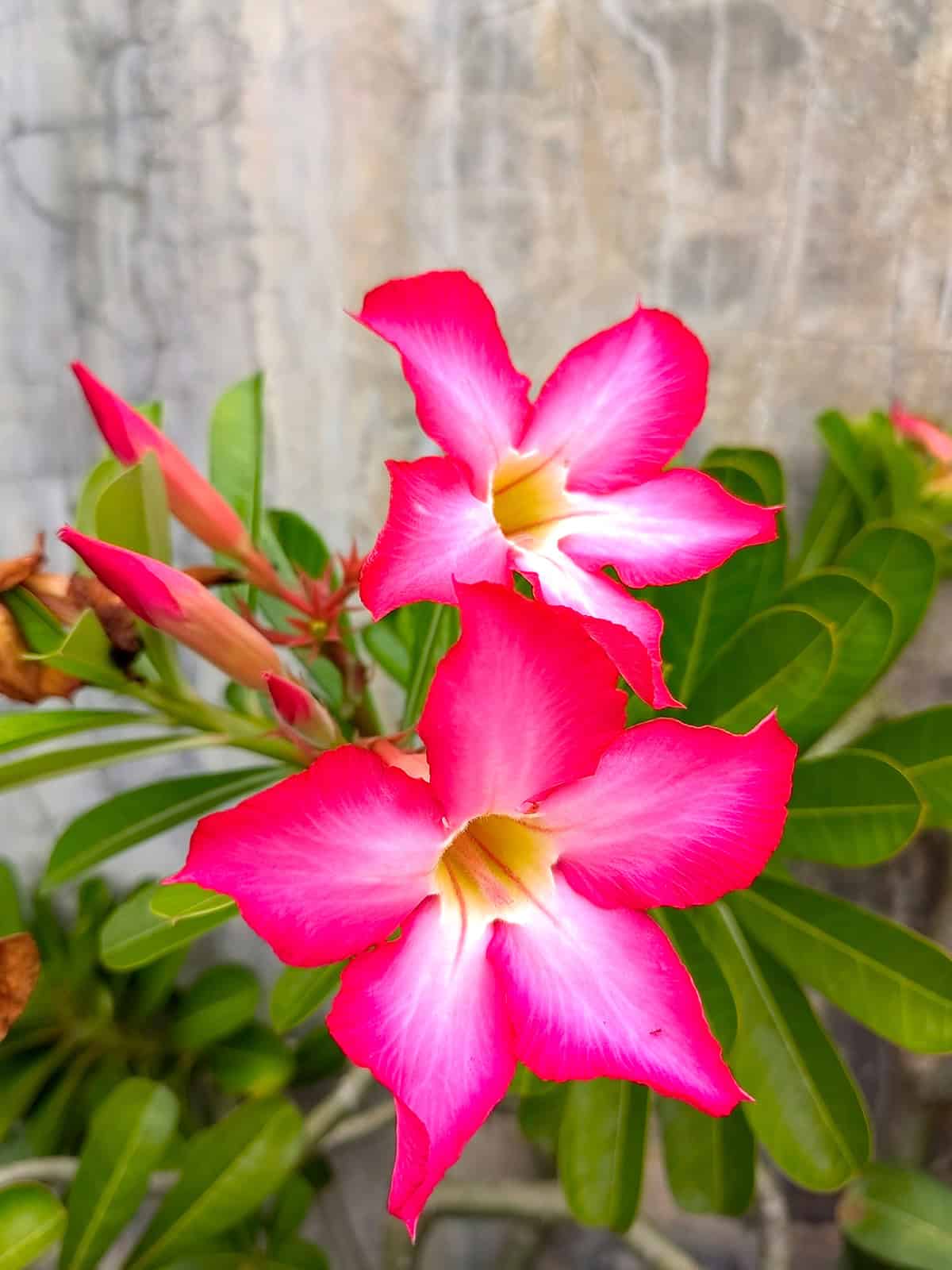
Those bold, trumpet-shaped blooms—sometimes pink, sometimes a dramatic red or white—really steal the show. Even when it’s not flowering, that chunky, sculpted trunk keeps things interesting.
Give it plenty of sun and make sure the soil drains fast; soggy roots are a no-go. Honestly, it’s happiest when you forget to water it now and then. Works beautifully in containers, too, especially if you want a little drama out on the patio.
